Wearing High Heels May Cause Uncomfortable Foot Conditions
 Many women choose to wear high heels for several reasons, despite knowing they may hurt their feet. These types of shoes can be stylish, and can accentuate a particular clothing style, in addition to making the legs appear slender. It is important to purchase the right size shoes, which may help to ensure maximum comfort. The toes may benefit when there is adequate room for them to move freely, and this can be accomplished by choosing shoes that have a round toe area. The feet may need to rest after wearing high heels, and it is recommended to alternate with shoes that have a lower heel. Foot conditions that may develop from frequently wearing high heels can consist of bunions, hammertoe, corns, and blisters. If you would like additional information about how high heels can impact the feet, it is suggested that you confer with a podiatrist.
Many women choose to wear high heels for several reasons, despite knowing they may hurt their feet. These types of shoes can be stylish, and can accentuate a particular clothing style, in addition to making the legs appear slender. It is important to purchase the right size shoes, which may help to ensure maximum comfort. The toes may benefit when there is adequate room for them to move freely, and this can be accomplished by choosing shoes that have a round toe area. The feet may need to rest after wearing high heels, and it is recommended to alternate with shoes that have a lower heel. Foot conditions that may develop from frequently wearing high heels can consist of bunions, hammertoe, corns, and blisters. If you would like additional information about how high heels can impact the feet, it is suggested that you confer with a podiatrist.
High heels have a history of causing foot and ankle problems. If you have any concerns about your feet or ankles, contact Jim Maxka, DPM from South Penn Foot & Ankle Associates. Our doctor can provide the care you need to keep you pain-free and on your feet.
Effects of High Heels on the Feet
High heels are popular shoes among women because of their many styles and societal appeal. Despite this, high heels can still cause many health problems if worn too frequently.
Which Parts of My Body Will Be Affected by High Heels?
- Ankle Joints
- Achilles Tendon – May shorten and stiffen with prolonged wear
- Balls of the Feet
- Knees – Heels cause the knees to bend constantly, creating stress on them
- Back – They decrease the spine’s ability to absorb shock, which may lead to back pain. The vertebrae of the lower back may compress.
What Kinds of Foot Problems Can Develop from Wearing High Heels?
- Corns
- Calluses
- Hammertoe
- Bunions
- Morton’s Neuroma
- Plantar Fasciitis
How Can I Still Wear High Heels and Maintain Foot Health?
If you want to wear high heeled shoes, make sure that you are not wearing them every day, as this will help prevent long term physical problems. Try wearing thicker heels as opposed to stilettos to distribute weight more evenly across the feet. Always make sure you are wearing the proper shoes for the right occasion, such as sneakers for exercising. If you walk to work, try carrying your heels with you and changing into them once you arrive at work. Adding inserts to your heels can help cushion your feet and absorb shock. Full foot inserts or metatarsal pads are available.
If you have any questions please feel free to contact our office located in Hanover, PA . We offer the newest diagnostic and treatment technologies for all your foot and ankle needs.
Diabetes and Blisters
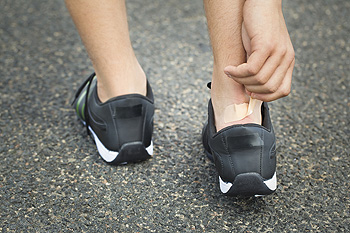 Patients who are diabetic may be prone to developing blisters on their feet. This may be a result of the inability to feel if the skin has become damaged due to friction. Blisters are the body’s natural method of protecting raw skin by forming a protective bubble over it. This is filled with fluid that will gradually drain as new skin develops. It may develop from wearing shoes that do not fit correctly, or possibly from having elevated blood sugar levels. It is important to ensure the blister is properly covered, which can help to prevent premature drainage. Diabetic patients are suggested to be under the care of a podiatrist who can effectively treat blisters on the feet.
Patients who are diabetic may be prone to developing blisters on their feet. This may be a result of the inability to feel if the skin has become damaged due to friction. Blisters are the body’s natural method of protecting raw skin by forming a protective bubble over it. This is filled with fluid that will gradually drain as new skin develops. It may develop from wearing shoes that do not fit correctly, or possibly from having elevated blood sugar levels. It is important to ensure the blister is properly covered, which can help to prevent premature drainage. Diabetic patients are suggested to be under the care of a podiatrist who can effectively treat blisters on the feet.
Blisters may appear as a single bubble or in a cluster. They can cause a lot of pain and may be filled with pus, blood, or watery serum. If your feet are hurting, contact Jim Maxka, DPM of South Penn Foot & Ankle Associates. Our doctor can provide the care you need to keep you pain-free and on your feet.
Foot Blisters
Foot blisters are often the result of friction. This happens due to the constant rubbing from shoes, which can lead to pain.
What Are Foot Blisters?
A foot blister is a small fluid-filled pocket that forms on the upper-most layer of the skin. Blisters are filled with clear fluid and can lead to blood drainage or pus if the area becomes infected.
Symptoms
(Blister symptoms may vary depending on what is causing them)
- Bubble of skin filled with fluid
- Redness
- Moderate to severe pain
- Itching
Prevention & Treatment
In order to prevent blisters, you should be sure to wear comfortable shoes with socks that cushion your feet and absorb sweat. Breaking a blister open may increase your chances of developing an infection. However, if your blister breaks, you should wash the area with soap and water immediately and then apply a bandage to the affected area. If your blisters cause severe pain it is important that you call your podiatrist right away.
If you have any questions, please feel free to contact our office located in Hanover, PA . We offer the newest diagnostic and treatment technologies for all your foot care needs.
Blisters
Blisters are pockets of fluid that occur under the top layer of your skin. These fluid pockets are usually filled with pus, blood, or serum. Blisters may itch or hurt and can appear as a single bubble or in clusters.
The most common types of blisters are friction blisters. This type of blister may be caused by wearing shoes that are too tight. Friction blisters can also occur on the hands. A change in temperature may also cause blisters on the feet. In the freezing air, frostbite on your toes can lead to blisters, as well as sunburn from hot weather.
The best way to treat a blister is to keep it clean and dry. Most blisters will get better on their own. Once the skin absorbs the fluid within the blister, it will flatten and eventually peel off. You should avoid popping your blister unless you podiatrist does it for you. Additional treatment options include applying an ice pack to the blister or using over-the-counter blister bandages to cover the affected area.
If your blister becomes discolored, inflamed, or worsens it is advised that you speak to your podiatrist. Blisters that are yellow, green, or purple may be infected and require immediate medical attention. Blisters that are abnormally colored may be a sign of a more serious underlying health condition such as herpes.
Why Does Poor Circulation Occur?
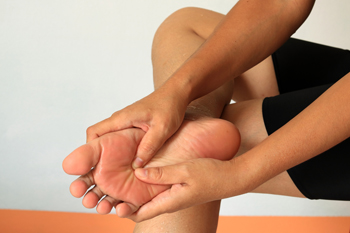 The symptoms of poor circulation in the feet generally happen as a result of blood that is carried inefficiently through the body. Poor circulation can occur from blocked arteries, or possibly from unhealthy living habits. These can include minimal stretching and exercise, smoking, or it may happen from standing or sitting for the majority of the day. Common signs this may be impacting your feet can be tingling or numbing sensations. Additionally, patients may feel a burning pain, and it may become difficult to walk or to complete daily activities. In severe cases, the toes may appear discolored, and the feet may begin to swell. Mild relief may be felt when the feet are frequently elevated, and it may be beneficial to incorporate a gentle exercise program into your daily routine. If you are afflicted with poor circulation, please schedule a consultation with a podiatrist who can help you to manage this condition.
The symptoms of poor circulation in the feet generally happen as a result of blood that is carried inefficiently through the body. Poor circulation can occur from blocked arteries, or possibly from unhealthy living habits. These can include minimal stretching and exercise, smoking, or it may happen from standing or sitting for the majority of the day. Common signs this may be impacting your feet can be tingling or numbing sensations. Additionally, patients may feel a burning pain, and it may become difficult to walk or to complete daily activities. In severe cases, the toes may appear discolored, and the feet may begin to swell. Mild relief may be felt when the feet are frequently elevated, and it may be beneficial to incorporate a gentle exercise program into your daily routine. If you are afflicted with poor circulation, please schedule a consultation with a podiatrist who can help you to manage this condition.
Poor circulation is a serious condition and needs immediate medical attention. If you have any concerns with poor circulation in your feet contact Jim Maxka, DPM of South Penn Foot & Ankle Associates. Our doctor will treat your foot and ankle needs.
Poor Circulation in the Feet
Poor blood circulation in the feet and legs is can be caused by peripheral artery disease (PAD), which is the result of a buildup of plaque in the arteries.
Plaque buildup or atherosclerosis results from excess calcium and cholesterol in the bloodstream. This can restrict the amount of blood which can flow through the arteries. Poor blood circulation in the feet and legs are sometimes caused by inflammation in the blood vessels, known as vasculitis.
Causes
Lack of oxygen and oxygen from poor blood circulation restricts muscle growth and development. It can also cause:
- Muscle pain, stiffness, or weakness
- Numbness or cramping in the legs
- Skin discoloration
- Slower nail & hair growth
- Erectile dysfunction
Those who have diabetes or smoke are at greatest risk for poor circulation, as are those who are over 50. If you have poor circulation in the feet and legs it may be caused by PAD and is important to make changes to your lifestyle in order to reduce risk of getting a heart attack or stroke. Exercise and maintaining a healthy lifestyle will dramatically improve conditions.
As always, see a podiatrist as he or she will assist in finding a regimen that suits you. A podiatrist can also prescribe you any needed medication.
If you have any questions please feel free to contact our office located in Hanover, PA . We offer the newest diagnostic and treatment technologies for all your foot and ankle needs.
Can My Child Have Foot Conditions as a Result of Being Overweight?
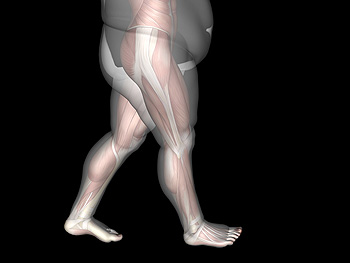 Research has indicated the chances may increase for children who are obese to have difficulty in walking. The feet may be affected by the additional weight, and this may cause the gait to change. Additionally, it may be more difficult for overweight children to balance, possibly as a result of weakened muscles in the feet. Flat feet is common among obese children. This may lead to general fatigue in the body, and it can become difficult to maintain activity levels. If you would like more information about how obesity can affect your children’s feet, it is advised that you consult with a podiatrist.
Research has indicated the chances may increase for children who are obese to have difficulty in walking. The feet may be affected by the additional weight, and this may cause the gait to change. Additionally, it may be more difficult for overweight children to balance, possibly as a result of weakened muscles in the feet. Flat feet is common among obese children. This may lead to general fatigue in the body, and it can become difficult to maintain activity levels. If you would like more information about how obesity can affect your children’s feet, it is advised that you consult with a podiatrist.
Obesity has become very problematic at this point in time and can have extremely negative effects on the feet. If you’re an obese individual and are concerned about your feet, contact Jim Maxka, DPM from South Penn Foot & Ankle Associates. Our doctor can provide the care you need to keep you pain-free and on your feet.
Obesity and Your Feet
Since your feet are what support your entire weight when standing, any additional weight can result in pain and swelling. Being overweight is one of the main contributors to foot complications.
Problems & Complications
Extra Weight – Even putting on just a few extra pounds could create serious complications for your feet. As your weight increases, your balance and body will shift, creating new stresses on your feet. This uneven weight distribution can cause pain, even while doing the simplest tasks, such as walking.
Diabetes – People who are overweight are at serious risk of developing type-2 diabetes, which has a drastic impact on the health of your feet. As you get older, your diabetes might worsen, which could lead to loss of feeling in your feet, sores, and bruises. You could also become more prone to various infections.
Plantar fasciitis – Pressure and stress that is placed on muscles, joints, and tendons can trigger plantar fasciitis, which is an inflammation of tissue that forms along the bottom of the foot.
If you have any questions please feel free to contact our office located in Hanover, PA . We offer the newest diagnostic and treatment technologies for all your foot and ankle needs.
Gout Is a Form of Arthritis
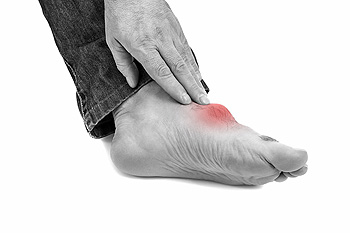 Excess levels of uric acid in the bloodstream may lead to a painful arthritic condition that is known as gout. These particular levels can become elevated as a result of eating foods that have large amounts of purines in them, which can include red meat and seafood. Additionally, foods that have a high sugar content may lead to the development of gout. Common symptoms that are often associated with this condition can include extreme pain on the side of the big toe, swelling, and difficulty walking. There may be existing factors that can lead to the development of gout. These factors can consist of genetic reasons, being overweight, or consuming excess alcohol. Mild relief may be found when anti-inflammatory medicine is taken. If you are routinely affected with gout, it is suggested that you consult with a podiatrist who can properly treat this condition.
Excess levels of uric acid in the bloodstream may lead to a painful arthritic condition that is known as gout. These particular levels can become elevated as a result of eating foods that have large amounts of purines in them, which can include red meat and seafood. Additionally, foods that have a high sugar content may lead to the development of gout. Common symptoms that are often associated with this condition can include extreme pain on the side of the big toe, swelling, and difficulty walking. There may be existing factors that can lead to the development of gout. These factors can consist of genetic reasons, being overweight, or consuming excess alcohol. Mild relief may be found when anti-inflammatory medicine is taken. If you are routinely affected with gout, it is suggested that you consult with a podiatrist who can properly treat this condition.
Gout is a painful condition that can be treated. If you are seeking treatment, contact Jim Maxka, DPM from South Penn Foot & Ankle Associates. Our doctor will treat your foot and ankle needs.
What Is Gout?
Gout is a form of arthritis that is characterized by sudden, severe attacks of pain, redness, and tenderness in the joints. The condition usually affects the joint at the base of the big toe. A gout attack can occur at any random time, such as the middle of the night while you are asleep.
Symptoms
- Intense Joint Pain - Usually around the large joint of your big toe, and it most severe within the first four to twelve hours
- Lingering Discomfort - Joint discomfort may last from a few days to a few weeks
- Inflammation and Redness -Affected joints may become swollen, tender, warm and red
- Limited Range of Motion - May experience a decrease in joint mobility
Risk Factors
- Genetics - If family members have gout, you’re more likely to have it
- Medications - Diuretic medications can raise uric acid levels
- Gender/Age - Gout is more common in men until the age of 60. It is believed that estrogen protects women until that point
- Diet - Eating red meat and shellfish increases your risk
- Alcohol - Having more than two alcoholic drinks per day increases your risk
- Obesity - Obese people are at a higher risk for gout
Prior to visiting your podiatrist to receive treatment for gout, there are a few things you should do beforehand. If you have gout you should write down your symptoms--including when they started and how often you experience them, important medical information you may have, and any questions you may have. Writing down these three things will help your podiatrist in assessing your specific situation so that he or she may provide the best route of treatment for you.
If you have any questions, please feel free to contact our office located in Hanover, PA . We offer the newest diagnostic and treatment technologies for all your foot care needs.
How to Practice Daily Foot Care
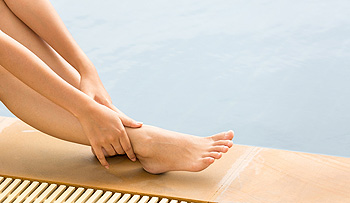 The feet are considered to be the foundation of the body, which is why it is important to take proper care of them. When this is properly accomplished, mobility and flexibility may be improved, and general aches and pains may diminish. Common foot problems that may be prevented by maintaining healthy feet can include bunions, hammertoes, and tendinitis. It is important to wear shoes that fit properly, maintain a healthy weight, and practice good foot hygiene. Additionally, it may be beneficial to perform gentle stretching techniques, which may help the feet to become strong. If additional information is needed about the importance of learning everyday foot care, please consult with a podiatrist.
The feet are considered to be the foundation of the body, which is why it is important to take proper care of them. When this is properly accomplished, mobility and flexibility may be improved, and general aches and pains may diminish. Common foot problems that may be prevented by maintaining healthy feet can include bunions, hammertoes, and tendinitis. It is important to wear shoes that fit properly, maintain a healthy weight, and practice good foot hygiene. Additionally, it may be beneficial to perform gentle stretching techniques, which may help the feet to become strong. If additional information is needed about the importance of learning everyday foot care, please consult with a podiatrist.
Everyday foot care is very important to prevent infection and other foot ailments. If you need your feet checked, contact Jim Maxka, DPM from South Penn Foot & Ankle Associates. Our doctor can provide the care you need to keep you pain-free and on your feet.
Everyday Foot Care
Often, people take care of their bodies, face and hair more so than they do for their feet. But the feet are a very important aspect of our bodies, and one that we should pay more attention to. Without our feet, we would not be able to perform most daily tasks.
It is best to check your feet regularly to make sure there are no new bruises or cuts that you may not have noticed before. For dry feet, moisturizer can easily be a remedy and can be applied as often as necessary to the affected areas. Wearing shoes that fit well can also help you maintain good foot health, as well as making it easier to walk and do daily activities without the stress or pain of ill-fitting shoes, high heels, or even flip flops. Wearing clean socks with closed shoes is important to ensure that sweat and bacteria do not accumulate within the shoe. Clean socks help to prevent Athlete’s foot, fungi problems, bad odors, and can absorb sweat.
If you have any questions please feel free to contact our office located in Hanover, PA . We offer the newest diagnostic and treatment technologies for all your foot and ankle needs.
Can Flat Feet Cause Pain?
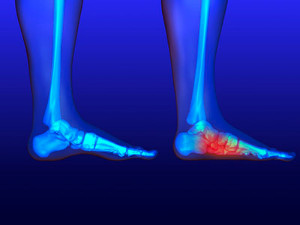 An effective way of checking to see if you have flat feet is to stand on the floor and notice if your entire foot touches the ground. Flat feet are generally not a cause for serious concern, despite the fact that there may be mild pain. Moderate relief may be found when custom made orthotics are worn, and this may help to provide the arch support that is needed for daily walking. Additionally, there may be specific foot stretches that can be frequently practiced which can be beneficial in strengthening the foot. Common causes for this condition can include genetic factors, insufficient foot growth, or medical conditions that may affect the foot muscles. If you have flat feet, it is suggested that you be under the care of a podiatrist who can help you with managing this condition.
An effective way of checking to see if you have flat feet is to stand on the floor and notice if your entire foot touches the ground. Flat feet are generally not a cause for serious concern, despite the fact that there may be mild pain. Moderate relief may be found when custom made orthotics are worn, and this may help to provide the arch support that is needed for daily walking. Additionally, there may be specific foot stretches that can be frequently practiced which can be beneficial in strengthening the foot. Common causes for this condition can include genetic factors, insufficient foot growth, or medical conditions that may affect the foot muscles. If you have flat feet, it is suggested that you be under the care of a podiatrist who can help you with managing this condition.
Flatfoot is a condition many people suffer from. If you have flat feet, contact Jim Maxka, DPM from South Penn Foot & Ankle Associates. Our doctor will treat your foot and ankle needs.
What Are Flat Feet?
Flatfoot is a condition in which the arch of the foot is depressed and the sole of the foot is almost completely in contact with the ground. About 20-30% of the population generally has flat feet because their arches never formed during growth.
Conditions & Problems:
Having flat feet makes it difficult to run or walk because of the stress placed on the ankles.
Alignment – The general alignment of your legs can be disrupted, because the ankles move inward which can cause major discomfort.
Knees – If you have complications with your knees, flat feet can be a contributor to arthritis in that area.
Symptoms
- Pain around the heel or arch area
- Trouble standing on the tip toe
- Swelling around the inside of the ankle
- Flat look to one or both feet
- Having your shoes feel uneven when worn
Treatment
If you are experiencing pain and stress on the foot you may weaken the posterior tibial tendon, which runs around the inside of the ankle.
If you have any questions please feel free to contact our office located in Hanover, PA . We offer the newest diagnostic and treatment technologies for all your foot and ankle needs.
Foot Ulcers and Proper Treatment
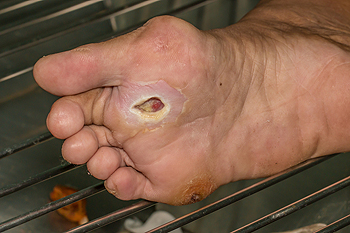 Many diabetic patients are aware of the importance of properly taking care of wounds on their feet. Foot ulcers can be common in these types of patients, and can become worse as a result of damaged nerve endings that may accompany diabetes. This may cause the patient to lose feeling in the feet, making it possible that wounds on the feet are left undetected. If an existing wound becomes infected, it may develop into a foot ulcer. One of the first steps in treating a foot ulcer is to remove the affected wound tissue. This can be beneficial in helping the wound to drain, in addition to effectively examining the tissue that lies beneath it. Patients who have foot ulcers may be guided to wear a specific type of boot, or offloading device. This is a necessary step for successful healing. There are measures that can be taken which may help to prevent wounds on the feet. These can include examining the feet daily, washing and drying the feet thoroughly, and making sure blood glucose levels are within a normal range. If you have wounds on your feet, it is strongly suggested that you are under the care of a podiatrist who can help you to properly manage this condition
Many diabetic patients are aware of the importance of properly taking care of wounds on their feet. Foot ulcers can be common in these types of patients, and can become worse as a result of damaged nerve endings that may accompany diabetes. This may cause the patient to lose feeling in the feet, making it possible that wounds on the feet are left undetected. If an existing wound becomes infected, it may develop into a foot ulcer. One of the first steps in treating a foot ulcer is to remove the affected wound tissue. This can be beneficial in helping the wound to drain, in addition to effectively examining the tissue that lies beneath it. Patients who have foot ulcers may be guided to wear a specific type of boot, or offloading device. This is a necessary step for successful healing. There are measures that can be taken which may help to prevent wounds on the feet. These can include examining the feet daily, washing and drying the feet thoroughly, and making sure blood glucose levels are within a normal range. If you have wounds on your feet, it is strongly suggested that you are under the care of a podiatrist who can help you to properly manage this condition
Wound care is an important part in dealing with diabetes. If you have diabetes and a foot wound or would like more information about wound care for diabetics, consult with Jim Maxka, DPM from South Penn Foot & Ankle Associates. Our doctor will assess your condition and provide you with quality foot and ankle treatment.
What Is Wound Care?
Wound care is the practice of taking proper care of a wound. This can range from the smallest to the largest of wounds. While everyone can benefit from proper wound care, it is much more important for diabetics. Diabetics often suffer from poor blood circulation which causes wounds to heal much slower than they would in a non-diabetic.
What Is the Importance of Wound Care?
While it may not seem apparent with small ulcers on the foot, for diabetics, any size ulcer can become infected. Diabetics often also suffer from neuropathy, or nerve loss. This means they might not even feel when they have an ulcer on their foot. If the wound becomes severely infected, amputation may be necessary. Therefore, it is of the upmost importance to properly care for any and all foot wounds.
How to Care for Wounds
The best way to care for foot wounds is to prevent them. For diabetics, this means daily inspections of the feet for any signs of abnormalities or ulcers. It is also recommended to see a podiatrist several times a year for a foot inspection. If you do have an ulcer, run the wound under water to clear dirt from the wound; then apply antibiotic ointment to the wound and cover with a bandage. Bandages should be changed daily and keeping pressure off the wound is smart. It is advised to see a podiatrist, who can keep an eye on it.
If you have any questions, please feel free to contact our office located in Hanover, PA . We offer the newest diagnostic and treatment technologies for all your foot care needs.
Possible Causes of Tarsal Tunnel Syndrome
 The pain that comes from tarsal tunnel syndrome, or TTS, is generally felt in the ankle, foot, and toes. It is considered to be a nerve disorder, and occurs when the surrounding nerves become inflamed. This can happen for a variety of reasons including: repetitive stress in sporting activities, excess body weight, or medical conditions such as tendonitis. Additionally, enduring an injury may play a significant role in developing this condition. These can consist of ankle sprains or dislocations. Some patients find relief in undergoing physical therapy, taking pain medications, resting the foot, or wearing orthotics. If you feel you have tarsal tunnel syndrome, please consult with a podiatrist who can advise you on correct treatment techniques.
The pain that comes from tarsal tunnel syndrome, or TTS, is generally felt in the ankle, foot, and toes. It is considered to be a nerve disorder, and occurs when the surrounding nerves become inflamed. This can happen for a variety of reasons including: repetitive stress in sporting activities, excess body weight, or medical conditions such as tendonitis. Additionally, enduring an injury may play a significant role in developing this condition. These can consist of ankle sprains or dislocations. Some patients find relief in undergoing physical therapy, taking pain medications, resting the foot, or wearing orthotics. If you feel you have tarsal tunnel syndrome, please consult with a podiatrist who can advise you on correct treatment techniques.
Tarsal tunnel syndrome can be very uncomfortable to live with. If you are experiencing tarsal tunnel syndrome, contact Jim Maxka, DPM of South Penn Foot & Ankle Associates. Our doctor can provide the care you need to keep you pain-free and on your feet.
Tarsal Tunnel Syndrome
Tarsal tunnel syndrome, which can also be called tibial nerve dysfunction, is an uncommon condition of misfiring peripheral nerves in the foot. The tibial nerve is the peripheral nerve in the leg responsible for sensation and movement of the foot and calf muscles. In tarsal tunnel syndrome, the tibial nerve is damaged, causing problems with movement and feeling in the foot of the affected leg.
Common Cause of Tarsal Tunnel Syndrome
- Involves pressure or an injury, direct pressure on the tibial nerve for an extended period of time, sometimes caused by other body structures close by or near the knee.
- Diseases that damage nerves, including diabetes, may cause tarsal tunnel syndrome.
- At times, tarsal tunnel syndrome can appear without an obvious cause in some cases.
The Effects of Tarsal Tunnel Syndrome
- Different sensations, an afflicted person may experience pain, tingling, burning or other unusual sensations in the foot of the affected leg.
- The foot muscles, toes and ankle become weaker, and curling your toes or flexing your foot can become difficult.
- If condition worsens, infections and ulcers may develop on the foot that is experiencing the syndrome.
A physical exam of the leg can help identify the presence of tarsal tunnel syndrome. Medical tests, such as a nerve biopsy, are also used to diagnose the condition. Patients may receive physical therapy and prescriptive medication. In extreme cases, some may require surgery.
If you have any questions please feel free to contact our office located in Hanover, PA . We offer the newest diagnostic and treatment technologies for all your foot and ankle needs.









